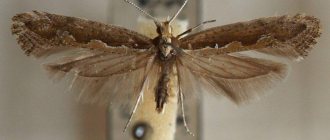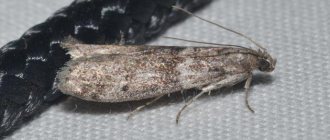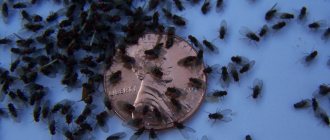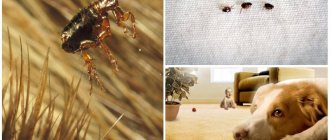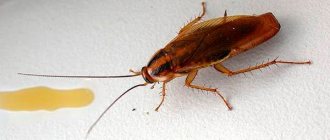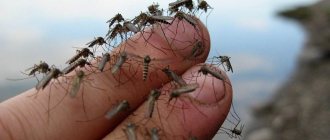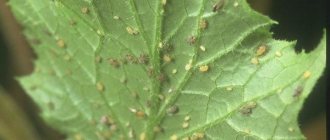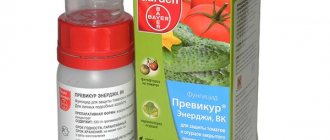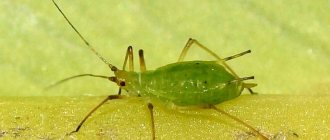When moths appear in an apartment, it is not without reason. A nondescript butterfly flying around the house should alert the owners of the home. Either she has already laid eggs in a secluded place, or she is still looking for this corner. The butterfly should be destroyed and care should be taken to purchase an effective moth repellent. Having gotten rid of the flying insect, it is necessary to conduct an audit and check all possible places where the moth could lay eggs. The moth larvae that emerge from them will begin to feed on everything that comes their way.
Reasons for the appearance of moths in an apartment
Pale butterflies living in the kitchen are food moths, the caterpillars of which eat such products of the human diet as:
- cereals, grains and flour products;
- Tea coffee;
- chocolate, sugar, baked goods;
- potato;
- food for pets.
Sugar scattered on the table.
At the same time, the larvae ignore spicy and strong-smelling foods: onions, garlic, red or black pepper. The reason for the appearance of such insects is called:
- the presence of caterpillars in purchased products;
- migration of adult moths through the ventilation system or open windows;
- creating conditions in the apartment that are favorable for moth breeding (darkened niches without strong odors).
Many people mistakenly believe that only sloppy housewives get moths. However, statistics show that in 80% of cases, adult insects appear in the apartment due to the dishonesty of manufacturers and sellers of products.
Unsealed packaging allows moths to easily penetrate inside, lay larvae and travel with the buyer over any distance.
The optimal conditions for the reproduction of clothes moths are:
- clothing, upholstery or curtains made of wool, fur and other natural materials;
- carpets made of natural wool;
- woolen or fur shoes (felt boots, high boots, fur-lined boots);
- stuffed animals;
- book bindings.
Moths on woolen clothes.
In times of famine, moth caterpillars even eat synthetic fabrics, although such materials are more likely to harm the population than ensure its viability.
The most common causes of clothes moths are:
- the presence of larvae in purchased clothing or interior items;
- migration of moths with old, used clothes or furniture brought into the apartment;
- migration of caterpillars on the fur of pets.
Types of flying insects
Household moth is a general term for all varieties of insects that can get into an apartment and ruin your favorite clothes and groceries. They differ in their feeding habits and external characteristics. There are six types.
- Clothes moth. Light yellow butterfly with a lilac tint on the wings. The larvae of the parasite are white, with powerful jaws, and feed on soiled areas of clothing, gnawing them to holes.
- Fur moth. A white moth with black spots on its wings. Caterpillars eat products made of fur, velvet and wool. Standard cellophane clothing bags do not pose a barrier for them.
- Furniture moth. Butterfly with yellow-gray wings. The larvae eat sofa upholstery and fur items. They live inside furniture or in closets.
- Buffalo bug. The moth is dark brown in color with specks on the wings. Lives in carpeting, gradually eating fluffy pile.
- Wood moth. A small moth that climbs into apartments for the winter.
- Food moth. The butterfly is brown or gray in color, belongs to the moth family, the wingspan does not exceed 15 mm. Lives in the kitchen, eating groceries.
How is it dangerous?
The damage caused by moths will be an unpleasant surprise for any housewife. The proximity to this small, inconspicuous insect causes holes to appear on clothes. They can be tiny or so large that the item can only be thrown in the trash. It is especially unpleasant when expensive wardrobe items, such as a natural fur coat, winter boots, or a mink hat, are attacked. This is associated with considerable financial losses, which significantly impact the family budget.
In extreme situations, a person in his own apartment may find himself hostage to insects. There are so many moths that they swarm around, land on your face, and get into your mouth and nose. In the evenings, following their nature, they circle around light bulbs and lamps, and at night they prevent sleep more than mosquitoes or flies. At night, the persistent desire of moths to settle on a human face causes especially strong irritation.
Varieties of house moths
In most cases, moths enter our apartments in search of food for their larvae. The most interesting thing is that adult moths do not eat at all. But, at the same time, it fully catches up with what it lost with its gluttony at the “caterpillar” age. It is during this period that insect larvae can cause enormous damage to things and products stored in the house. So, the following types of moths can become our roommates:
- Clothes;
- Fur coats;
- Furniture;
- Food.
Clothes
The places where moths mainly prefer to settle and lay larvae are:
- Storerooms;
- Cabinets;
- Linen baskets.
The larvae of these insects feed on fabric fibers, preferring knitted and woolen items. They are most attracted to things that retain the smell of human sweat (another additional motivation for not storing dirty things in the basket). It is worth noting that they absolutely do not like synthetics; they can only ruin things made of mixed fabric.
Fur coat
The moth, called the fur moth, is a lover of fur, felt and felt. The powerful jaws of the larvae are designed to grind fur fibers, cutting them. By the way, even a satiated caterpillar does not stop spoiling things. She continues to cut the pile, making her way to a new secluded corner. Despite the fact that these insects are somewhat smaller than clothing insects, they are capable of practically destroying a new fur coat in one season.
Furniture
As the name suggests, the habitat of furniture moths is the upholstery of upholstered furniture. The larvae begin their “meal” from the hair of armchairs and sofas, and then come to the surface and begin to gnaw through bald spots and tunnels in the upholstery. During the process of pupation, the moth leaves larvae on blankets or rugs that cover the furniture. Accordingly, they also suffer from her life activity. Natural materials are more preferable for these insects, however, in the absence of such, they will not disdain semi-synthetic ones.
Food
This pest is also popularly called moth.
His favorite places in the house are:
- Kitchen;
- Pantry;
- Barn.
It is there that careless people keep her favorite delicacies:
- Cereals;
- Flour;
- Sugar;
- Nuts;
- Mushrooms;
- Herbs and roots;
- Dried fruits;
- Food for cats and dogs.
However, food moths can successfully find food for themselves in the form of any dry food product stored in the kitchen, be it starch, pasta, or even tobacco products.
It is interesting that any moth remains true to its preferences and a food moth will never spoil furniture, and a furniture moth will not gnaw a fur coat.
Chemical preparations for moths
The range of industrial moth control products includes preparations with different compositions and modes of action.
Fumigator
To get rid of moths in your apartment, you can use a fumigator.
The device can use both liquid and plates with applied active substance.
The advantages of the method include such properties as:
- Minimum effort. Just plug the device into a power outlet and wait for the result.
- No marks on clothes or furniture.
- Processing safety for products.
- Safety of the active substance for people and pets.
Electric fumigator for moth control.
The only drawback is the long wait time for the effect, but some manufacturers promise complete relief from insects after just 4 hours.
Moth traps
Moth traps are also a passive pest control tool that does not have any negative effects on children or pets. The principle of operation is simple: a compact box is placed at the source of moths. Inside there is a pheromone bait (special for each type of moth) that attracts insects. A substance is applied to the inner surface of the trap, to which each individual caught in the device is glued.
The first effect of such a product can be seen within 3-4 days after the start of use, and complete relief from insects occurs after a few weeks.
Aerosols
Aerosols are a proven means of combating moths. Inside the can there is an insecticidal substance that is poisonous to insects. If it enters the respiratory tract, it causes rapid death of moths of any type of moth.
When using an aerosol, you must comply with the following safety requirements:
- remove children and pets from the premises;
- work in a respirator and gloves;
- do not process products;
- After treatment, do a wet cleaning and ventilate the apartment well.
Aerosols for protection against moths.
Many people complain of dizziness and nausea after working with aerosols, but this method of fighting moths is still in demand among Russians.
Spray
The spray is a means of protecting expensive clothes from moths. It is not aimed at destroying moths and larvae, but at repelling them. Taking precautions, the substance should be sprayed onto clothing, furniture or the inside of shoes, holding the can at a distance of 20-30 cm from them.
Pills
The tablets are made from mineral raw materials, natural and synthetic essential oils, which have a moth-repellent aroma. At the same time, this aroma can be perceived by a person as pleasant and attractive. Most often, anti-moth tablets have the scent of lavender, tangerine or mint.
In one section of a standard wardrobe you need to place 1-2 tablets, which should be replaced with new ones after six months. The change of the drug is timed to coincide with seasonal wardrobe updates.
Plates
Insecticidal plates are also designed to protect wool and fur products. The active substance in them destroys adults and larvae. At the same time, no traces remain on clothing, and the use of the product does not require active human participation.
Moth protection plates.
The plates are placed in closed spaces for storing things: cabinets, drawers, boxes, mezzanines.
The place where the plate is attached should be in the upper part of the space, since the distribution of the active substance occurs from top to bottom. After handling, it is recommended to wash your hands well.
Aerosols and sprays
Aerosol against moths
Aerosols against moths are a solution of an insecticide packaged under pressure in a can. When spraying the product, small drops of the toxic substance enter the insects' bodies along with the air, which leads to their instant poisoning and death.
Important!
Insecticides can cause an allergic reaction in people. The first signs of an allergy are: dizziness, cough, difficulty breathing. You will not be able to get rid of food moths in the kitchen using these means - you need to use natural repellents.
Due to the rapid dispersion of the toxic substance in space, aerosols and sprays are known as the most effective remedies for moths. But they have some disadvantages regarding their use:
- in order to achieve the necessary result in the fight against pests, you need to treat all surfaces and corners of furniture, cabinets, and dressing rooms;
- Before treatment, all residents and pets must leave the apartment and remove food and personal hygiene items from the free access area;
- Before using the drug, you need to read the instructions and strictly follow its instructions;
- when using the spray, a person must use personal protective equipment: gloves, a respirator or a mask;
- when spraying, you need to keep the spray at arm's length from yourself;
- You cannot use the moth repellent after its expiration date;
- After all procedures, you need to ventilate the room and carry out wet cleaning.
Review of the best products on the market
Among aerosols, the following brands are most often purchased:
- "Armol". Used to destroy moths on outerwear (fur coats, coats), carpets, curtains, upholstered furniture with natural upholstery. Has a lavender scent. “Armol Expert odorless” is used to treat public places or for allergies. Analogues are Mosquitall “Moth Protection” and “Extramit”.
- “Raptor Moth Protection.” Particularly effective in the fight against clothes moths. If the item is not washed after treatment, the insecticidal effect will persist for a year. After washing, the treatment must be repeated.
- "Clean house". At the same time effective and economical. A 150 ml bottle is enough for double treatment of a standard one-room apartment. Has a herbal aroma.
- “Difox.” Does not leave stains or streaks on the treated surface. Does not affect larvae, therefore requires twice application.
- "Tornado". Protects the house from moths for 6 months. Has a pleasant smell.
The most effective fumigators are:
- "DiK-3". Compact body and low power consumption of 4.5 W are the main advantages of this device. Compatible with liquid and universal action plates.
- Mosquitall. It is an analogue of “DiK-3”, destroys moths in a room of 30 square meters. m.
- Raid. Effectively fights moths, but is more expensive.
Fumigators
Fumigators are easy to use and highly effective. Their use in just a few weeks will completely get rid of moths. To use the fumigator, plug the device into a power outlet and run the extension cord into a closet or kitchen cabinet. Heating a special plate will ensure the spread of a subtle odor, which has a detrimental effect on pests. After a few days of exposure, the moth will completely die.
Fumigators are absolutely harmless to the human body. The faint odor will not cause discomfort or an allergic reaction.
The most common models include “Moskitol” (destroys pests and mosquitoes within a radius of 30 m), “Reid” (effectively kills moths, but is quite expensive) and “DiK-3” (destroys food and clothes moths, as well as mosquitoes ).
Folk remedies for moth control
Plants with essential oils can be used to repel moths.
Lavender
It has long been used as a natural remedy against moths. It smells nice, retains its effect for a long time and is safe for the health of people and pets. Dried lavender flowers are placed in fabric bags, which, in turn, are placed in wardrobes, chests of drawers and boxes with winter clothes.
Artemisia grass
It has a sharp, bitter odor that moths do not like. It is enough to collect wild grass, tie it in bunches and put them deep in the closet or mezzanine.
Mint
An excellent remedy for harmful insects. Collect a couple of handfuls of leaves, dry them in the sun and place them in cotton or linen bags. These sachets can be placed in a shoe box, in a fur coat sleeve, between sweaters or books. The pleasant aroma will not only repel moths, but will also permeate clothing and interior items.
Tansy
Hundreds of years ago, the plant was used as a remedy for agricultural pests: leaf caterpillars and Colorado potato beetles. Then its effectiveness was established against household insects: bedbugs and moths. If desired, you can collect the grass yourself; it grows along roadsides, in vacant lots, and forest clearings. It is better to do this in late summer or early autumn, when the plant enters the flowering period. It is easier for city residents to purchase dried tansy at the pharmacy.
Orange and tangerine
The peel of citrus fruits has a pungent aroma that is unbearable for moths. The dried peel of a tangerine or orange can be placed in a wardrobe or kitchen cabinet, since this remedy is equally effective in combating both clothes and food butterflies. However, citrus fruits are not suitable for repelling larvae.
Dried orange peels.
Fir oil
An excellent remedy for moths, which is in demand among fans of aromatherapy. Do not drip oil directly onto fabric, carpet or fur to avoid stubborn stains. It is better to apply a few drops to cotton pads and place them in the closet. If desired, you can occasionally heat the oil in an aroma lamp, then the effect on the insect will be more intense.
Garlic
Able to protect cereals from food moths. To do this, just put one peeled clove in each container.
Tobacco
In the middle of the 20th century. Soviet housewives packed bed linen and winter clothes with packs of Prima, and especially experienced women stocked up on tobacco leaves, which repelled moths and protected clothes from caterpillars.
Glue traps
Glue traps will help eliminate the problem. They are not effective enough, so they are recommended to be used in conjunction with other methods. The traps emit special pheromones that attract males, they stick and die. Due to their death, the reproduction of pests stops, and insects completely disappear from the room.
Among the most popular brands are moth repellents “Raptor” (a glue trap that has no specific odor), “Global” (does not contain toxic substances, so can be used to exterminate food moths), “Aerokson” (can be located near food products) and “Natural Control” (the trap is aimed at exterminating laundry pests).
Using garment covers
Covers for clothes, made of fabric with special insecticidal impregnation, are an additional means of protecting expensive clothing from flying pests. The duration of use of such a cover is 1 year, however, experts recommend renewing the impregnation of the cover every 3 months, using a special poison for this.
Special cases for storing clothes.
When choosing a moth cover, it is better to give preference to one that matches the size of the product, is made of dense, light-proof fabric with a texture that allows the fur to “breathe” freely.
What do moths eat?
In nature, moth larvae feed on bird feathers, grains, vegetables, and animal hair. In an apartment, moths eat much richer foods than in the wild. The most delicious food is natural and old. She eats almost everything, fabrics, furs, cereals and even human hair.
They have a particular preference for sweaty shoes and clothes that smell, and they are also attracted to carpets on which liquid has been spilled at some point.
To help: How to get rid of sweaty feet
In the kitchen, larvae feed on flour, cereals, nuts, dried fruits, pasta, sweets, cookies, and semolina. In general, they like everything that people do. And if you notice a worm in semolina, then believe me, there is more than one, and it is better to throw such a product in the trash.
Of course, one moth does not eat much, but if you consider that the female lays up to 200 larvae, then you understand what can happen to your favorite blouse or food in the kitchen.
Contact specialists
Specialized companies provide services for the destruction of moths in houses, apartments, retail, office and warehouse premises. Treatment is carried out using the cold or hot fog method.
Treatment of the room with cold fog.
Cold fog is an aerosol spray of an insecticidal composition with a temperature equal to the ambient temperature.
It stays in the air for no more than 4 hours and is suitable for treating rooms where animals or plants are located.
Hot fog is a spray of a product with a temperature of about 60°C. Its hovering in the air lasts about 10 hours; this option is used to kill moths in greenhouses or non-residential premises.
Operating principle
Most Raptor products, regardless of release form, work on the principle of fumigation. The chemical releases nerve toxins into the air when exposed to high temperatures.
Raptor vapor particles from insects settle on the bodies of flies, mosquitoes and other pests and penetrate the body through the spiracles. The drug enters the hemolymph and reaches the nervous system with the blood, which has an immediate effect. The result is complete paralysis with death.
Raptor preparations against moths, mosquitoes and other midges contained pyrethrin extracted from mountain chamomile flowers. Subsequently, the manufacturer began to use artificial repellents that have a more pronounced effect.
Prevention measures
There are effective methods that help prevent the appearance of unpleasant neighbors in the wardrobe.
Preventing moths from appearing in the closet
First of all, this is the use of essential oils, sharp-smelling plants, tobacco and citrus peels, which repel insects and prevent them from laying eggs on clothes. In addition, special tablets have a similar effect.
Careful care of your wardrobe, regular washing, airing, and storing clothes in covers also help protect things from damage.
Where do moths come from?
Even if you don’t have a mink coat, don’t hope that this insect will bypass your apartment, it has its own views on this. Cleanliness is also not a prohibition for it, for example, as it is for cockroaches.
Although the moth is not a strong flyer, it can still fly to you through a ventilation hood or from a staircase landing, although this happens extremely rarely. It can also be carried by your pet on its thick fur, but this also happens extremely rarely.
In this question, the main thing is to understand what kind of moth has settled in your apartment and then there will be an answer to the question of where the moth comes from.
Where do moths come from in the kitchen?
If you have a moth at home, and you are sure that it is not a clothes moth, but a kitchen moth, then I will tell you where it came from. Believe it or not, it also happens that in large stores they sell cereals already with moth. It is in hermetically sealed bags, which are already packaged in kilograms at the factory.
If cereals, spices and other pasta are stored improperly, insects can easily settle there, and when entrepreneurs discover this, they package the goods and sell them at a fabulously low price, a discount, so to speak. I personally have encountered this.
This is where the answer to the question comes from; therefore, we ourselves bring moths home from the store.
By the way, if there is a grocery store in your apartment building, then the presence of moths should not scare you either.
Moth in the kitchen
Kitchen or food moths are called differently: cereal, grain, flour - the essence does not change. If you find moth larvae in flour or one of the cereals, you will have to check the entire kitchen, cabinets and refrigerator, including.
Prevention
Having gotten rid of the affected food products, you will need to take care of their safety in the future, that is, store cereals in closed containers. If a moth is in a bag of cereal, it is preferable to get rid of it. If this is not possible or you discovered the problem at the very beginning, sort out the cereal and dry it in the oven or microwave. Be sure to replace the bag with a new one.
Basic rules of wrestling
The first thing you need to understand when starting to fight moths is that this is not an insect that can be dealt with by mechanical means. In other words, trying to kill insects is simply futile. Females lay eggs in different places around the perimeter of the entire room, so all efforts must be directed toward destroying them.
You need to start by determining the habitat of the moth. If an insect is spotted in the kitchen, then the first
The rule of dealing with it is to eliminate contaminated products. If the insect constantly flies away from the cabinets, the fight will be longer.
In order for the fight against moths in clothes to make sense, it is first necessary to conduct a complete check of all things. Those that are subject to heat treatment must be washed in hot water or simply steamed. Some modern models of washing machines have this function. Freezing can also help, for example, things can be taken out into the cold for a day and not a single larva will remain in them. Of course, this can only be done in winter, and only if possible.
Only after such simple manipulations can you resort to other folk or store-bought remedies, of course, if the mole still remains.
Chemicals
Anti-flying insecticides will help against pestra
They must be used carefully, remembering that insecticidal aerosols are harmful to health, especially for people with allergies
In addition, they spread an unpleasant odor. Aerosols are used as follows:
- All surfaces are treated with the product, including cabinets, cabinets, and household appliances.
- After waiting a couple of hours, the furniture is wiped with detergent.
- The room is well ventilated.
Among the sprays, the following are highly effective:
- Extramit. By spraying the product, you can forget about moths for six months.
- Clean house. Used in small houses, it helps to quickly get rid of adults and kill larvae.
- Armol. Does not harm furniture and destroys butterflies at all stages of development.
- Raptor. Has a pleasant lemon scent. Safe for people.
Fumigators are widely used against moths. They do not affect people or pets, but they do kill insects. The most popular products are Reid, DiK-3, Mosquitoll. They show results over large areas and are effective against most types of moths. Before using the fumigator, you should assess the degree of infection of the apartment. If it is high, it is better to resort to more effective methods.
When you turn on the electrical device, the plate with a specific anti-moth composition begins to heat up. Aromatic fumes affect the respiratory tract of insects and the chitinous coating, provoking the death of not only adults, but also larvae. They act more slowly than sprays. The plates help get rid of insects in a few days or weeks, depending on the severity of the problem.
In the store you can purchase chemical repellents for harmful insects in various forms, including aerosols.
Sections are another popular remedy that will help drive away moths in an apartment. They are hung on walls or in closets. The substance contained in the drug kills butterflies, but does not harm the eggs. Sections based on essential oils diffuse a pleasant aroma of herbs or fruits into the room.
After using them, it is advisable to ventilate the room, but you must first install mosquito nets to prevent the entry of new insects.
It is recommended to spray chemicals in May, when the moth is active and ready to reproduce. Insecticidal coils that repel pests have a good effect. They are installed in loggias and on balconies. Instead, you can use scented candles that contain poison.
Various tablets and briquettes are produced against moths, which are placed in places where insects accumulate. The vapors they emit prevent insects from laying eggs. Although the products are effective, in high concentrations they are dangerous to human health.
Tablets can be attached to the top of the wall. They will repel insects, preventing them from laying offspring. It is better not to be in the room while the tablets are in effect, and after using them you need to thoroughly ventilate the room.
No larvae found: what to do
Many people are mistaken in believing that butterflies that periodically appear in the room cause harm. In fact, things are eaten by larvae, which are laid by females that cannot fly. Therefore, do not think that by killing all the butterflies you have gotten rid of the pest. As soon as you notice a male, immediately look for the habitat of females and deposited larvae and begin radical actions to destroy the pest. If you still cannot find the caterpillars, use preventive methods:
- Before putting things in the closet, be sure to wash them - moths love dirty, unwashed clothes most of all.
- Ventilate the room more often, exerting a temperature effect on the larvae.
- If possible, disinfect clothes and places where they are stored with a quartz lamp.
- Use the above pest control methods for prevention.
Main types of moths
There are several types of house moths. And the butterfly looks different depending on its diet and habitat in the house.
Clothes moth
The most popular type of moth in the world lives in closets where the owners' belongings are located. Adults are butterflies with a wingspan of 12 to 18 millimeters. The transparent wings are uniformly colored in a light yellow tint. The front ones are narrow with gray gloss and fringe.
The larvae of the clothing parasite feed on ceramides of natural tissues. They prefer to live in tweed suits and mohair sweaters, making passages inside the fabrics. They are easy to spot from the inside of clothing. The pest is active at night. And since the cabinets are always dark, the environment is favorable for insect reproduction. The period of full development of clothes moths is 2-4 weeks.
food moth
The food pest starts in the kitchen. If the cereals are in bags, then the moth makes its way there, laying eggs. An adult butterfly has brownish or gray wings with light spots. Eggs laid in bulk products, dried fruits, and nuts are visible to the naked eye. Then whitish larvae appear in the bags. Butterfly caterpillars devour food, leaving excrement inside. You cannot eat contaminated cereals or flour.
The parasite likes to settle in:
- under a walnut shell;
- in dried fruits;
- in the bread bin;
- inside cereals, pasta;
- in flour;
- in ground spices.
Sometimes the pest is even found in garlic.
Cereal moth
One of the varieties of food moth is the cereal moth. It can live only in cereals, avoiding other food products. It is difficult to notice the grayish butterfly. She flies at night. Occasionally they notice her during the day, but she moves so quickly, rushing from side to side, that it is difficult to catch her. The pest is capable of infecting all the cereals in the cupboard in a short time. If you don’t catch it in time, you will have to throw away bulk products contaminated with eggs and larval waste.
Fur coat
The dangerous pest prefers to feed on fur and felt. The wingspan of the butterfly is from 10 to 16 millimeters. The front ones are golden in color with brown spots or dots. The leading edge of the wings is covered with light fringe. On the hind wings the fringe is darker.
Elongated oval-shaped eggs are light gray and large. The fertility of a female butterfly is up to 120 eggs. From them larvae emerge, which build themselves a cover from the lining threads of the fur coat. In the spring, caterpillar worms pupate. Until this time, they harm fur products.
Furniture
Previously, this type of moth was classified as a clothes moth, but over time it was differentiated. The butterfly has narrow and long wings. Their color varies from dark to light golden with a reddish tint. During the day, butterflies hide in dark corners and fly out at night. The female lays yellowish eggs. The higher the air temperature, the faster the eggs develop. The development of caterpillars also depends on the air temperature in the apartment. The larvae prefer dry and dark places. They belong to the group of keratophages. Butterflies can damage furniture upholstery and book bindings.
Woolen
A type of furniture moth is a small butterfly with light yellow wings, a wingspan of 9-14 millimeters. Egg laying can be found in woolen items. Then larvae with a brownish head and a white body appear in the closet on the 6th day after laying eggs.
You can see butterflies in the fall, when they emerge from their pupae. Adults do not feed on keratids, and sedentary larvae are voracious. Their molt cases and excrement can be found in the folds of shawls and sweaters.
Cereal
Pests of grain stocks can live in warehouses. The butterfly has a body length of 9 millimeters, and the span of narrow lanceolate wings is up to 11-19. On the front wings, yellowish-gray, there are 2 black spots. The hind wings are painted in light gray tones of a bronze tint, with fringe visible along the edges. It is difficult to distinguish the color of a butterfly from the color of wheat grains.
During its short life of 1-2 weeks, the grain moth lays eggs in clusters. The female's fertility is 150-200 oval, milky white eggs. The pest's caterpillars are born yellow-orange and then change color to milky white. By gnawing the grain shell, they penetrate inside, where they feed on the endosperm. Inside the shell of the grain, one half may be occupied by a caterpillar, and the other half by its excrement. Pupation also occurs there. Over the summer, moths in barns produce 3-4 generations of pests.
Crayons
One of the cheapest means of struggle. It is used when insects are just beginning to appear in sight. In the pest's habitat, draw wide stripes with chalk, after wearing a mask and gloves: the product contains toxic substances. Treated areas should not come into contact with food or bedding. Ideally, the product is best used in combination with other methods of combating moths.
How to get rid of it quickly
Processing of the apartment and things
The method of combating moths depends on its habitat. The following method will help you get rid of pests in the kitchen:
- Start by inspecting the products. If they are heavily infested with insects, they should be thrown away. Eating such food can cause serious health problems.
- If pests have recently settled in the kitchen, the situation can be easily corrected. Sort out your foods carefully. Then dry them in an oven preheated to 60–70°C for 20 minutes. Leave the door ajar. After this, place the food in tightly sealed containers or plastic bags.
- The next step is to process the shelves and cabinets. Wipe them first with soapy water, then with clean water.
- Treat all cracks with vinegar. This can be done using a brush. Do not close the cabinets until they are completely dry.
To completely destroy food moths, you need to thoroughly clean the entire house of its larvae.
To destroy moths living in clothes and other things, shake off the affected items on the street or on an open balcony. Caterpillars usually do not cling tightly to clothing. Therefore, vigorous shaking helps get rid of them. Also, moth larvae cannot tolerate sunlight or fresh air. Therefore, place your clothes for the whole day in a brightly lit and well-ventilated place. Then treat things with dichlorvos.
Temperature effect
Moths are unable to maintain life at sub-zero temperatures.
The optimal indicator for it is +23°C. In order for the pests to die, damaged products should be left in the cold for 8–10 hours at a temperature of -20°C in winter. The moth will have no chance to survive.
The use of high temperature will be no less effective.
Before putting your clothes in the closet, iron them with a hot iron or steam them.
All clothing must be ironed thoroughly
Specialty chemicals
Treating the premises and furniture with chemicals will help to kill the pests.
There are several types of drugs for killing moths. These are plates, sections, briquettes, tablets and sprays. Each product has a different operating principle. Let's look at their features in more detail:
- Tablets and briquettes are made on the basis of camphor and paraffin. Their advantage is their low cost. Place the tablets on the top shelf of the cabinet for two weeks. The vapors that will emanate from them will repel moths. These products are quite effective, but they also have a serious drawback: they are unsafe for human health.
- The plates are more convenient to use. They do not have an unpleasant odor. The action of the plates is aimed at eradicating moths and caterpillars. These drugs retain their properties for six months. They are used similarly to tablets.
- Sections are recognized as the safest remedy for moths. They can be safely used even in children's things. The sections are covered with a protective film on top. Before use, it must be removed and the drug placed in the upper part of the cabinet. The product will fight moths for 4–6 months. Then it needs to be replaced. In small rooms, the footage of which does not exceed 15 square meters. m, you cannot use more than two sections.
- Sprays will also help to get rid of pests. To get rid of insects, two treatments of the cabinet with an interval of 2-3 weeks are enough. The sprays have a pleasant smell and do not damage fabrics. These are drugs such as “Armol”, “Clean House”, “Raptor” and “Antimol” and many others.
Photo gallery: chemicals for killing insects at home
The simplest and therefore popular remedy for moths is a closet hanger
Anti-moth tablets can be potentially dangerous to human health!
A whole series of anti-moth products is produced under the Armol brand
The popular brand MOSQUITALL produces special anti-moth sections for children's rooms
MOSQUITALL aerosol is convenient to use at home and in the country
Spray Raptor is designed for treating cabinets and things
Raptor product will effectively protect the kitchen from food moths
Chemical anti-moth preparations contain toxic substances. Therefore, before poisoning moths, take care of safety measures
It is important to remember the following:
- Do not start work without a gown, gloves and gauze bandage.
- After completing the procedure, wash your face and hands with soap.
- It is advisable to throw away protective clothing.
